
Look out, Canadian greenhouse vegetable growers. Mexican greenhouse vegetable production is on the rise – fast.
Look out, Canadian greenhouse vegetable growers. Mexican greenhouse vegetable production is on the rise – fast.
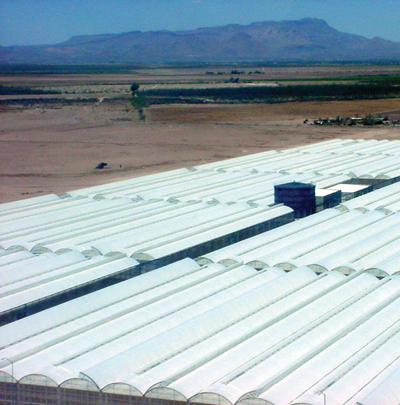
|
|
| An aerial view of one of the newer greenhouse projects in Mexico. Advertisement
|
That was the chilling warning Mexican greenhouse vegetable grower and
consultant Mario Steta brought B.C. growers at the Pacific Agriculture
Show.
“We’re moving from seasonal to full-year suppliers. Our quality and consistency has increased, we have improved our food safety, and most of our packing plants are now meeting or exceeding HACCP standards,” Steta said.
Greenhouse production has become trendy and is attracting lots of new investment. Mexican greenhouse vegetable production has increased from just 50 hectares in 1990 to over 3,000 hectares in 2005 and is expected to reach over 6,000 hectares within the next year. The expansion is coming in both high and low-tech greenhouses. In fact, Steta preferred not to call them greenhouses, instead using the term “environmentally-controlled structures.”
“While vegetable greenhouse growth has stopped in the U.S. and is stabilizing in Canada, it is still increasing in Mexico,” he said. “In 2008, we will be up 19 per cent in tomatoes, 35 per cent in peppers, and 29 per cent in cucumbers over 2007.”
TOMATO PRODUCTION LEADER IN NORTH AMERICA
In fact, Mexican greenhouse tomato production now exceeds production in both the U.S. and Canada. Mexico produces over 248,000 tonnes of greenhouse tomatoes, compared to about 214,000 tonnes in Canada and almost 190,000 tonnes in the U.S.
Even though more greenhouses are planned, Steta does not expect all of them to survive, suggesting some new projects are under-capitalized.
While Canadian and U.S. growers are starting to reach the limits of yield, Mexico still has lots of room for improvement. The average Mexican tomato yield is 130 tonnes/hectare, compared to over 450 in both the U.S. and Canada. And the variations between crops are huge: for beefsteak tomatoes, yields range from 160 to 600 tonnes/hectare, while pepper yields range between 70 and 280 tonnes/hectare.

|
|
| Mario Steta
|
|
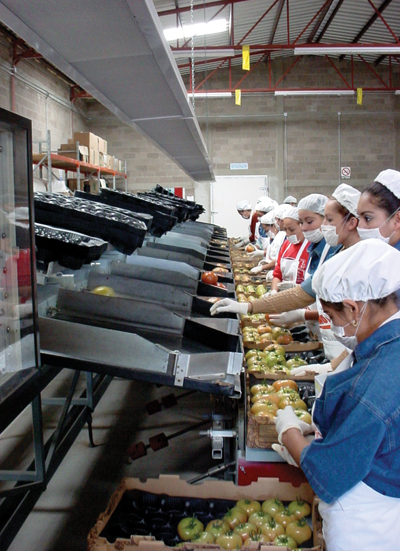 |
|
| Mexico has become the North American leader in greenhouse tomato production.
|
|
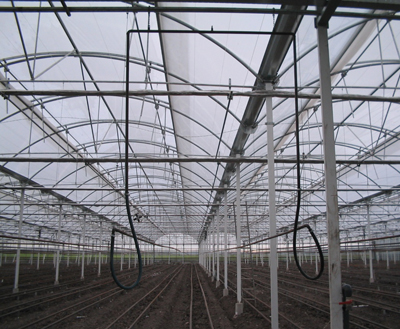
|
|
| A Mexican greenhouse, awaiting a new crop.
|
|
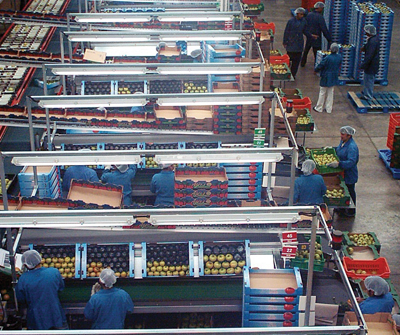 |
|
| A high-tech packing line in Mexico.
|
|
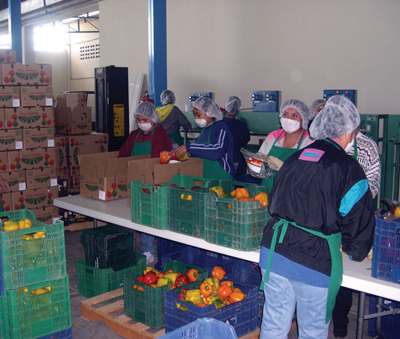 |
|
| On the packing line. |
PRODUCTION LEVELS BEHIND CANADA AND U.S.
Steta admits it may be some time before Mexico catches up to Canadian and U.S. production levels, noting many of the greenhouses are low- to mid-tech. Growers are also encountering more disease and pest issues as their production increases and do not yet have the expertise to deal with them.
So why is Mexico challenging the Canadian greenhouse industry? Steta believes the country has many natural advantages: there are many different environments so there are many different opportunities. Mexico is nearer the equator, so it has excellent winter light levels allowing year-round production, yet the weather remains relatively mild because the main growing areas are at higher altitudes.
‘NORTH AMERICA IS ONE MARKET’
Since “North America is one market,” Steta noted Mexico is chasing the same market as Canadian and American growers. That does not help B.C. or the four main American growers since Mexico has a geographic advantage in the large Eastern U.S. market.
Steta admitted the industry is facing a lot of issues – both costs and volumes are up, while prices are down around the world. Retail consolidation is also having an effect, forcing growers across North America to consolidate as they chase fewer purchasers. “You need to reduce the number of marketers,” Steta told his audience, suggesting there is probably only room for “maybe four to five shippers in all of North America.”
The consolidation could have one positive benefit. With several large growers/shippers all growing in or working with growers in Canada, the U.S. and Mexico, Steta believes there is less likelihood of damaging trade disputes among the three countries.
David Schmidt is a freelance writer and photographer in British Columbia.
Print this page